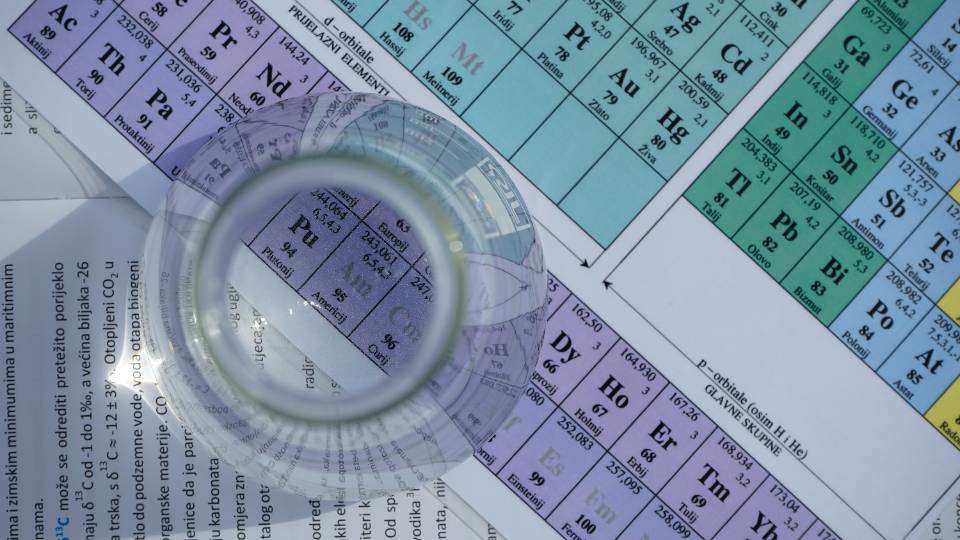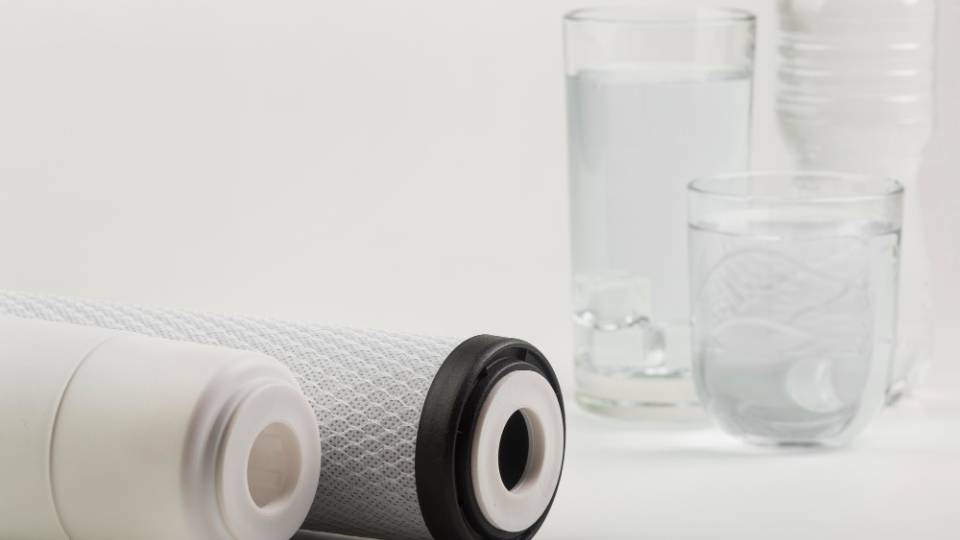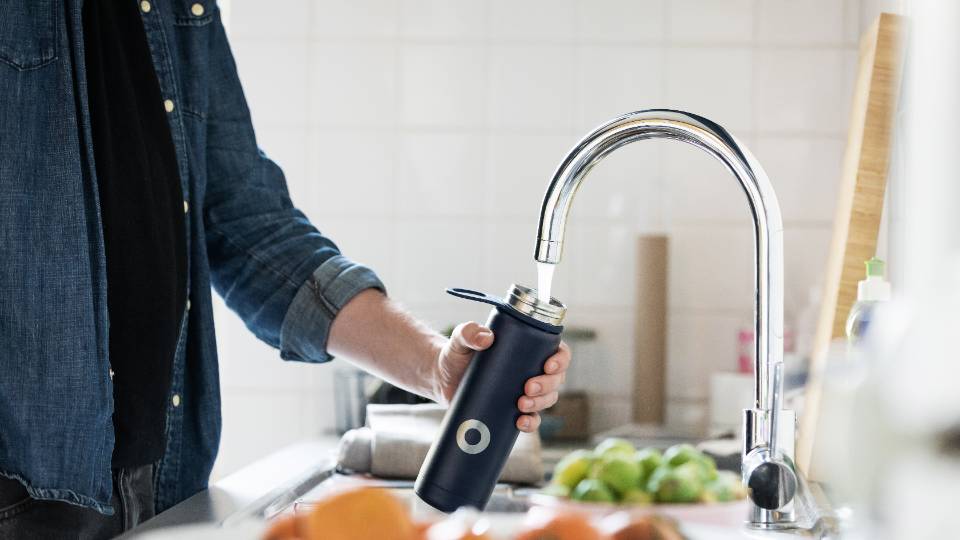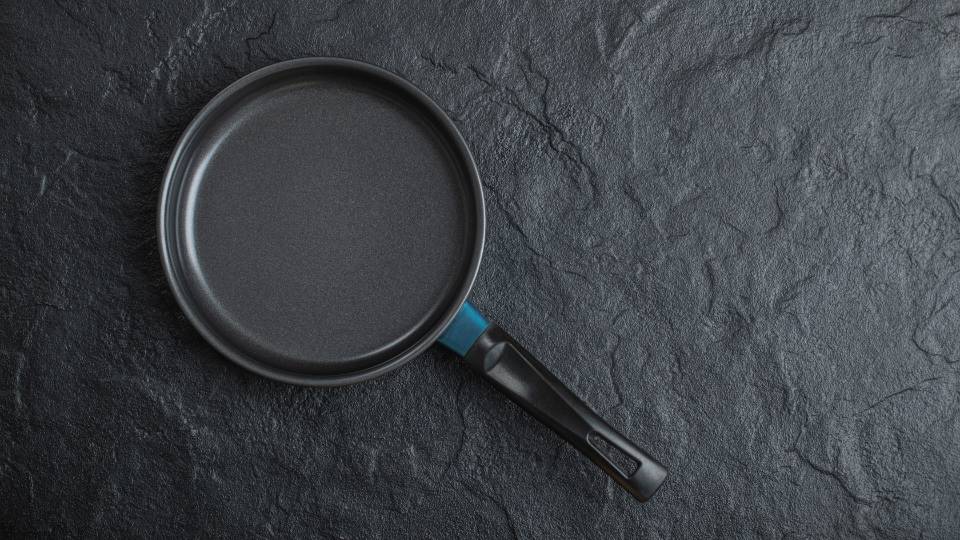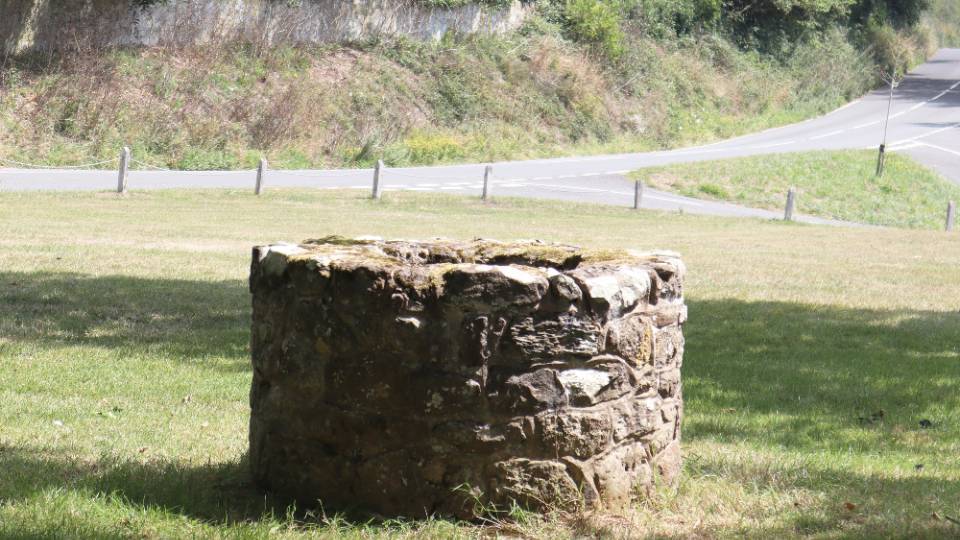Impacts of Coliform Bacteria on Water Quality
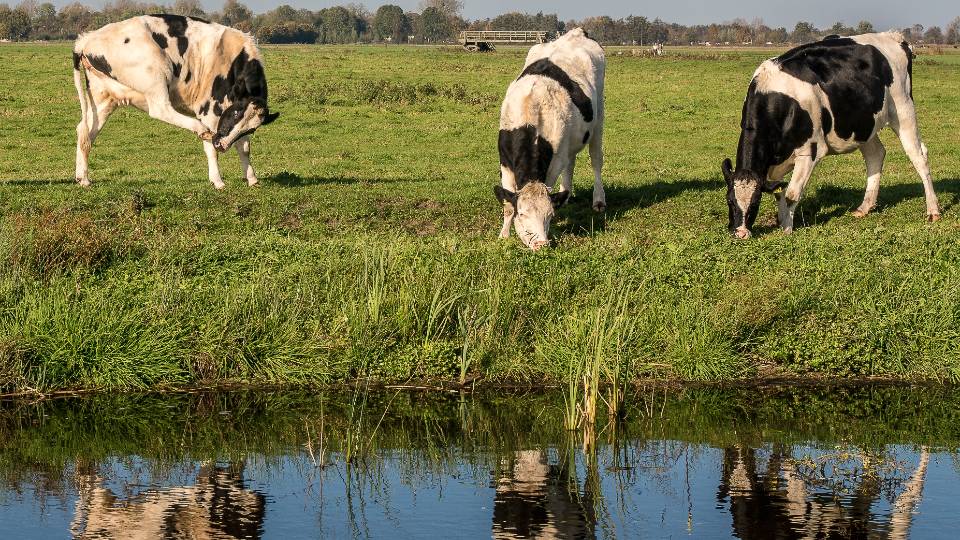
Coliform bacteria are rod shaped bacteria connected with the colon of warm-blooded animals. Coliform bacteria are useful indicator organisms because their presence in food or water indicate poor sanitary conditions. They are also relatively inexpensive to test for. The initial presence of total coliforms is not an immediate public health concern, but their continued presence suggests a continued source of contamination.
E. coli are a type of coliform bacteria. Not all coliform bacteria cause illness. E. coli is one of the types that does.
What are the health impacts of coliform bacteria?
Certain types of coliform bacteria can cause diarrhea, typhoid, dysentery, kidney failure, gastrointestinal illness, and wound infections [1]. This is of especial concern for at-risk populations. Some examples of bacterial contaminants are found in the table below.
| Species | Infection Type |
|---|---|
| Escherichia coli | Gastrointestinal illness, kidney failure |
| Legionella pneumophila | Lung diseases when inhaled |
| Shigella sonnei | Mild gastrointestinal illness, bloody diarrhea |
| Salmonella enterica | Mild gastrointestinal illness |
| Vibrio cholera | Gastrointestinal illness, watery diarrhea |
How do coliform bacteria get in my water?
There are many ways coliform bacteria can come to be detected in your water. There are three categories of ways coliform bacteria are introduced to the water: a source, physical integrity breach, or a system issue [2].
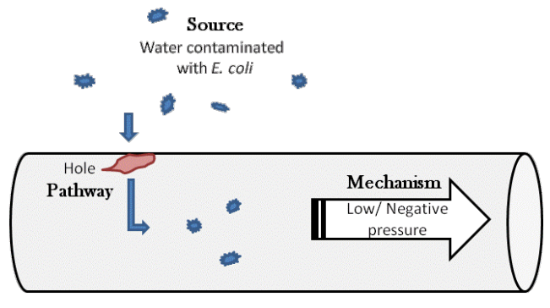
Sources- a point of issue that introduces bacteria into the water
Examples include:- Contaminated soil and water that surround pipes, valves, or other system infrastructure
- Growth of a population of bacteria that attach to pipe walls, where they are protected from disinfectants
- Deposits of corrosion products on the interior of the pipes
- Backflow from customer connections
- Use of materials that support coliform growth (ex. Materials that contain silicone or polyamide)
- Installation of improperly disinfected materials during repair or replacement
- Accumulations of sediment provide a place for bacteria to grow and protect it from disinfectants
- Unsanitary conditions at the wellhead
Breaches- a failure of equipment that creates a pathway for bacteria to enter the system
Examples include:- Imperfections in storage tanks
- Cross connection back flow due to the absence of a back-flow prevention device
- Leaks or small holes in the pipe that allow intrusion
- Deteriorating seals that allow intrusion
- Main break repairs that don’t follow sanitary procedures
- Watertight seal at wellhead not present
Mechanisms- a process that allows bacteria to enter or multiply in a system
Examples include:
- Weather-related events- flooding, droughts, excessively warm or cold weather
- Failure of treatment barrier
- Back siphonage, back pressure
- Low pressure conditions in distribution system
- Retention times
- Failure of chlorination equipment
- Improper settings on chemical feed
- Failure in secondary disinfection systems
- Loss of power
What is a normal number of coliform bacteria?
Ideally, the presence of coliform bacteria and E. coli should not be detected. However, if coliform bacteria are detected, the EPA has developed Level 1 and Level 2 assessments to be completed by water providers if the frequency of detected coliform bacteria is exceeded.
Level 1
| 40 or more samples per month | Exceed 5.0% |
| Fewer than 40 samples per month | 2 or more positive samples |
Level 2
| An E. coli maximum contaminant level (MCL) violation |
| 2 Level 1 Assessments performed within a 12-month period |
| A system with approved reduced annual monitoring has a Level 1 treatment technique trigger in each of two consecutive years |
References
[1] Curutiu, C., Iordache, F., Gurban, P., Lazar, V., & Chifiriuc, M. C. (2019). Main microbiological pollutants of bottled waters and beverages. Bottled and Packaged Water, 4, 403–422. Science Direct. https://doi.org/10.1016/b978-0-12-815272-0.00014-3[2] Office of Water. (2014). Revised total coliform rule assessments and corrective actions guidance manual interim final (EPA 815-R-14-006). Environmental Protection Agency. https://www.epa.gov/sites/default/files/2015-10/documents/revised_total_coliform_rule_assessments_and_corrective_actions_guidance_manual.pdf
Authors
Erin Rivers, Water Quality Extension Specialist; Abby Barton, Intern
Related Research



